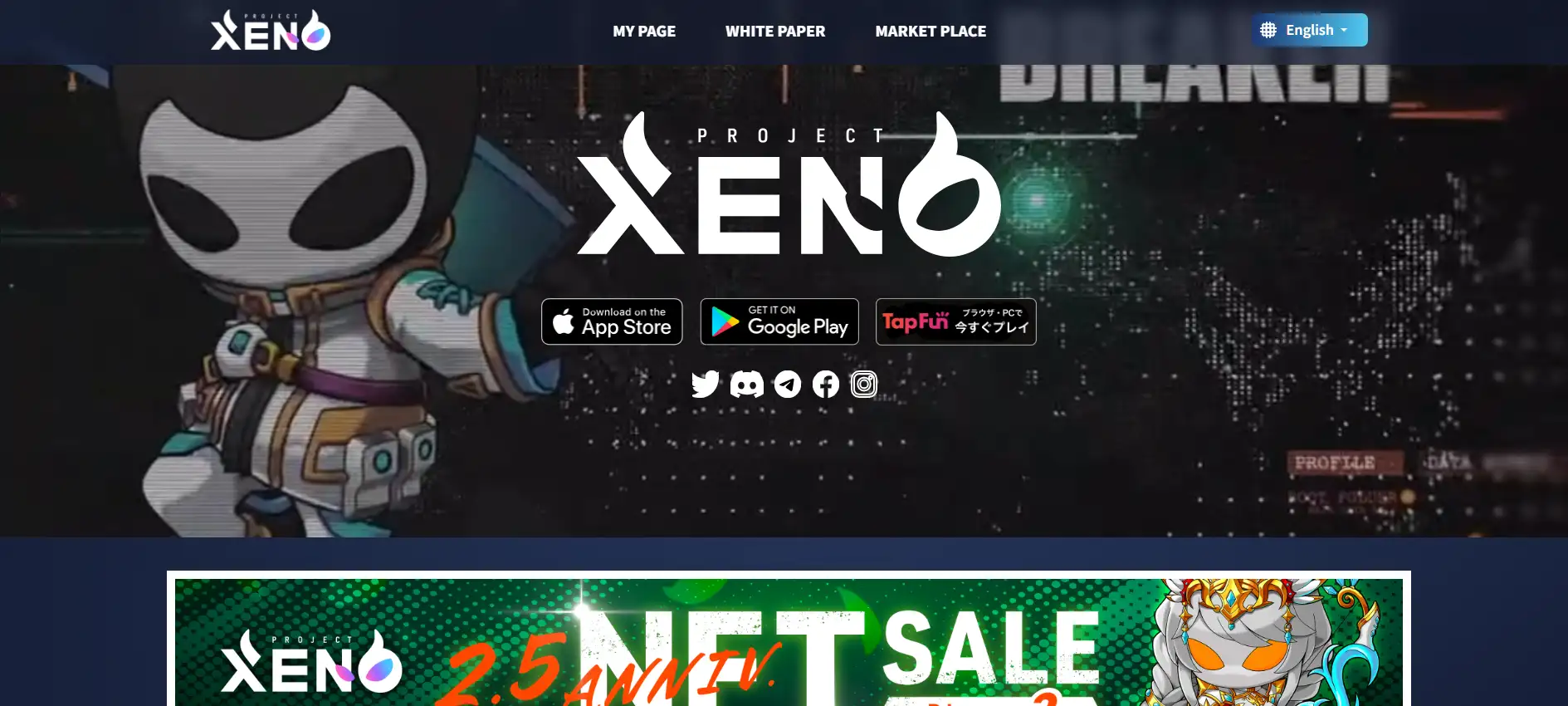Project Xeno is a mobile tactical PvP game that combines strategic 3×3 battles, collectible NFT characters, and a Play & Earn economy. The project is developed by CROOZ Blockchain Lab and EPOCH FACTORY, leveraging the team’s F2P expertise to merge Web2 convenience with Web3 capabilities. Xeno offers a deep combat system, dual tokenomics, an advanced marketplace, and a flexible monetization path within its ecosystem.
- The concept of Project Xeno and its place in Web3 gaming
- Gameplay mechanics: XENO classes, skill cards and strategy
- GXE/UXE token economy and marketplace currencies
- XENO NFT characters and the Play & Earn model
- Marketing, partnerships and development prospects

The concept of Project Xeno and its place in Web3 gaming
Project Xeno is a hybrid of mobile tactics, a collectible card system, and a Web3 economy. It is developed by CROOZ Blockchain Lab — a subsidiary of the Japanese company CROOZ, known for its extensive experience in mobile F2P titles. This background sets Xeno apart from typical Play-to-Earn games, where developers often focus solely on financial mechanics.
The game launched in May 2023 and was immediately positioned as a Web2/Web3 bridge: players can start for free like in a regular mobile game, while wallet connection and NFT ownership unlock additional possibilities. Project Xeno appeals to users with its hybrid structure: gameplay remains the core of the project, and blockchain serves as an optional enhancement rather than a requirement.
The project is oriented toward the Asian market, where mobile PvP games are traditionally popular, and this is where Xeno gained traction first thanks to marketing campaigns and well-known local faces. But as it becomes available globally through the App Store and Google Play, the game gradually extends beyond regional communities, attracting both Web3 users and traditional mobile players.
Gameplay mechanics: XENO classes, skill cards and strategy
The gameplay of Project Xeno centers around 3×3 duels where each player sends a team of three NFT heroes into battle. The combat system operates in a “real-time turn-based” format: actions occur sequentially, yet reaction speed and tactical decisions are crucial.
Each XENO belongs to a specific class and receives unique stats, two passive abilities, and one special move. Skill combinations are assigned randomly, creating a wide spectrum of builds and rarity levels.
A key tactical element is the 12-card deck. These cards define a player’s combat style by providing damage, healing, crowd control, temporary buffs, and various combined effects. Card synergy turns battles into strategic matches requiring resource management, cooldown awareness, and coordination between heroes.
Unlike typical P2E clickers, victory here depends on player skill: forming the right team, planning strategies, predicting enemy moves, and adapting mid-battle. This makes Xeno similar to competitive mobile strategies and adds depth to its gameplay.
GXE/UXE token economy and marketplace currencies
Project Xeno’s economic system is multi-layered, consisting of the governance token GXE, the utility token UXE, and three internal marketplace currencies. This structure separates gameplay processes from market volatility, keeping the ecosystem stable.
The table below explains the role of each component:
| Economic Element | Purpose | Where It’s Used | Withdrawable |
|---|---|---|---|
| GXE Token | Governance, NFT generation, customization | Creating XENO, trading | Yes |
| UXE Token | Utility token, in-game rewards | Upgrades, leveling, game mechanics | Yes |
| U Coin | Main in-game currency | Training, progression | Via UXE |
| Market Money | Marketplace payment unit | NFT purchases | No |
| G Coin | Service currency of the marketplace | Fees, utilities | No |
The tokenomics aims to maintain long-term value and avoid devaluation as the user base grows. GXE governs the ecosystem and powers NFT creation, UXE drives utility mechanics, while internal currencies help regulate the economy at the gameplay level. This approach reduces inflation and prevents the rapid “burnout” typical for weak P2E projects.
XENO NFT characters and the Play & Earn model
XENO NFT characters are the core of Project Xeno, defining its Play & Earn structure. Each XENO is a combat unit with its own rarity, set of abilities, and stats encoded in the NFT at creation. Owners gain access to PvP modes, character progression, and partial reward withdrawal.
The Play & Earn cycle is built on the following mechanisms:
- PvP battles — victories grant U Coin and potential UXE earnings.
- Character progression — leveling and upgrades increase the NFT’s value.
- Creating new NFTs — GXE enables generating new XENO.
- NFT marketplace trading — rare combinations of skills and classes can be highly valuable.
- Currency conversion — U Coin can be converted into UXE for real profit.
This “play → progress → earn” loop makes Xeno a self-sustaining ecosystem where economic growth is tied directly to gameplay skill. Unlike projects where earnings depend primarily on monetary investment, Xeno rewards activity, strong builds, and competitive mastery.
Marketing, partnerships and development prospects
Project Xeno actively promotes itself through influencer partnerships and regional marketing campaigns. In Japan, the game received a strong boost through collaboration with the blogger Hikaru, while in Southeast Asia, legendary boxer Manny Pacquiao became the project’s ambassador. These campaigns brought Xeno millions of views and a large influx of mobile players.
The developers follow a seasonal update model: new classes, cards, modes, seasonal rewards, and rankings consistently maintain long-term interest. E-sports initiatives — tournaments, streams, and competitive content — also strengthen the community.
The prospects of Xeno look promising: the project combines a strong mobile foundation, well-designed tokenomics, steady development, and an effective marketing strategy. Thanks to this, the game has the potential to secure a long-lasting position among Web3 titles.




